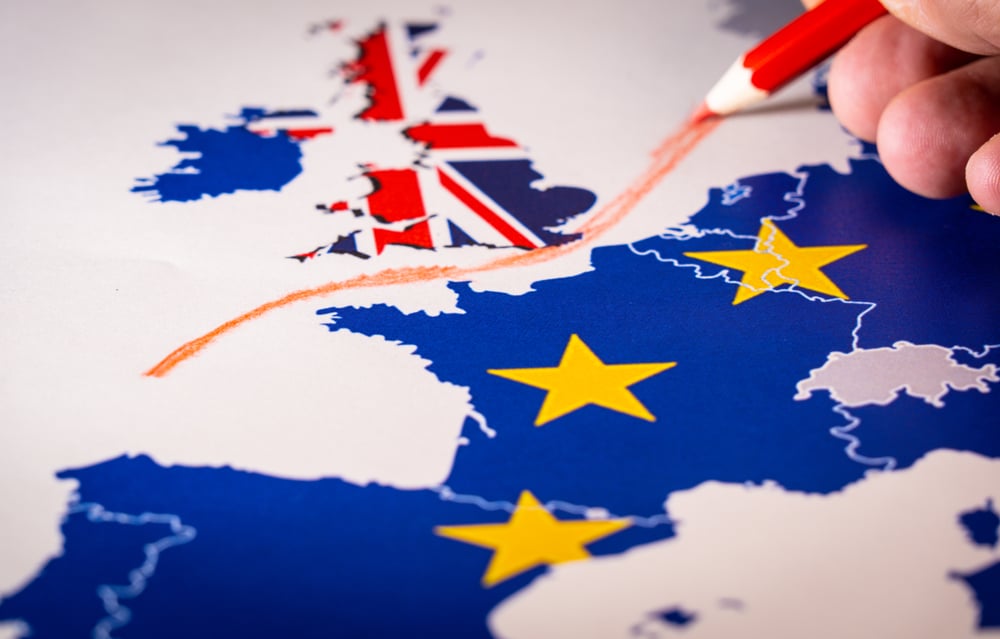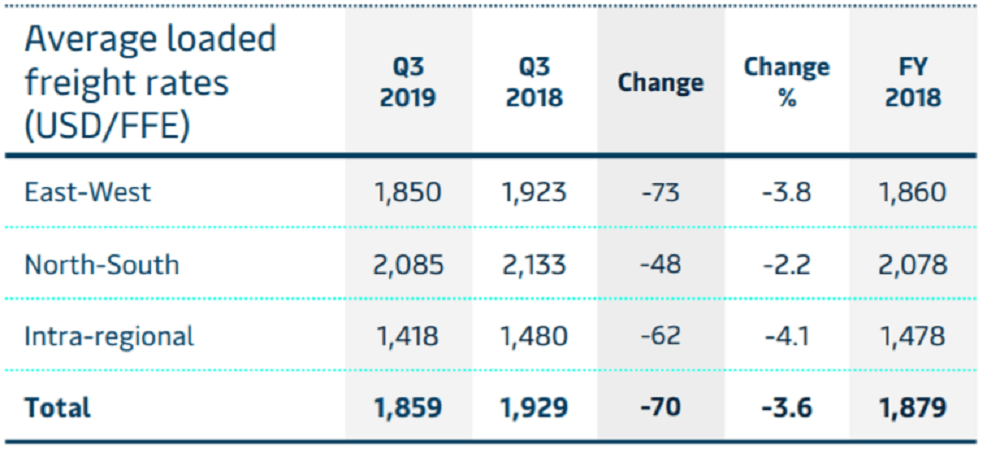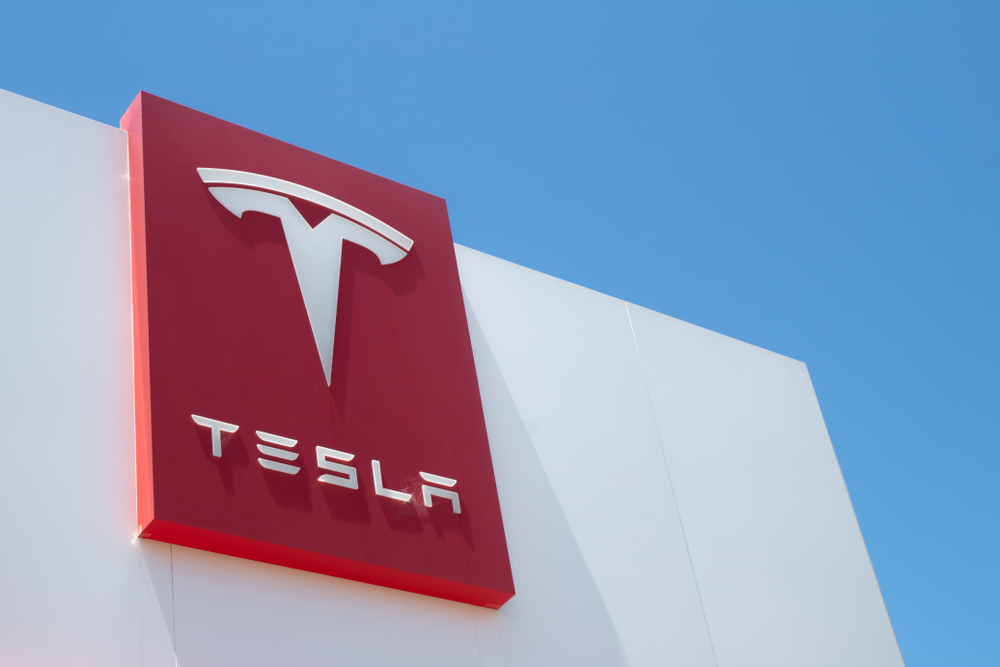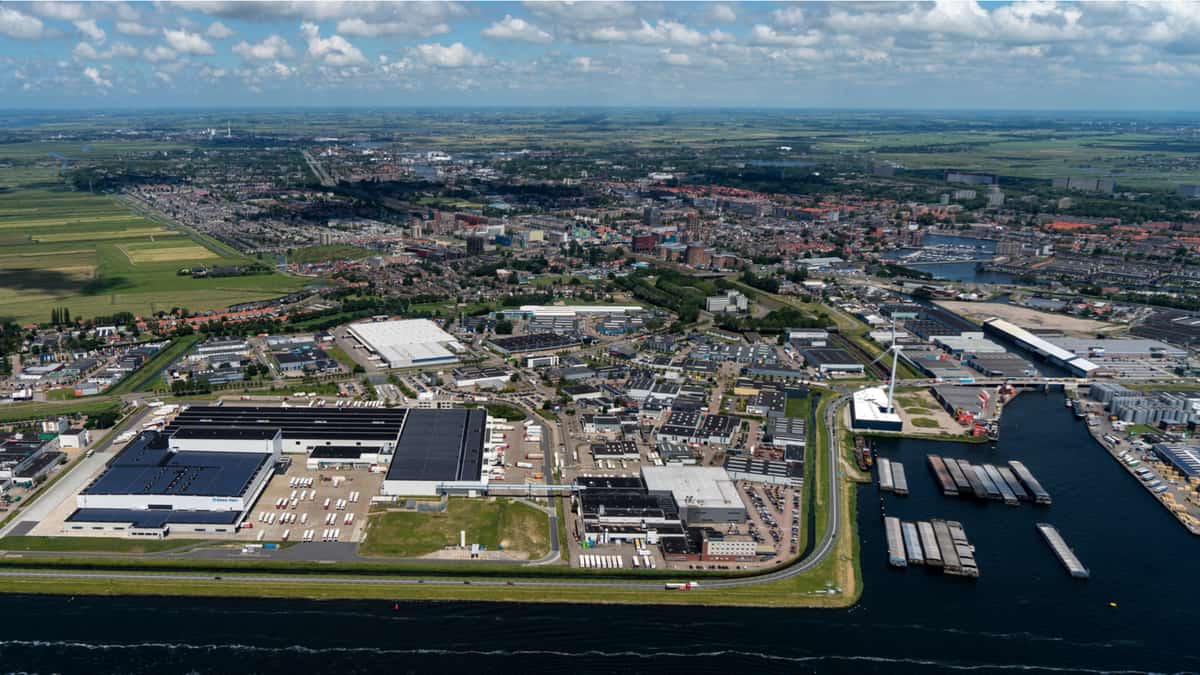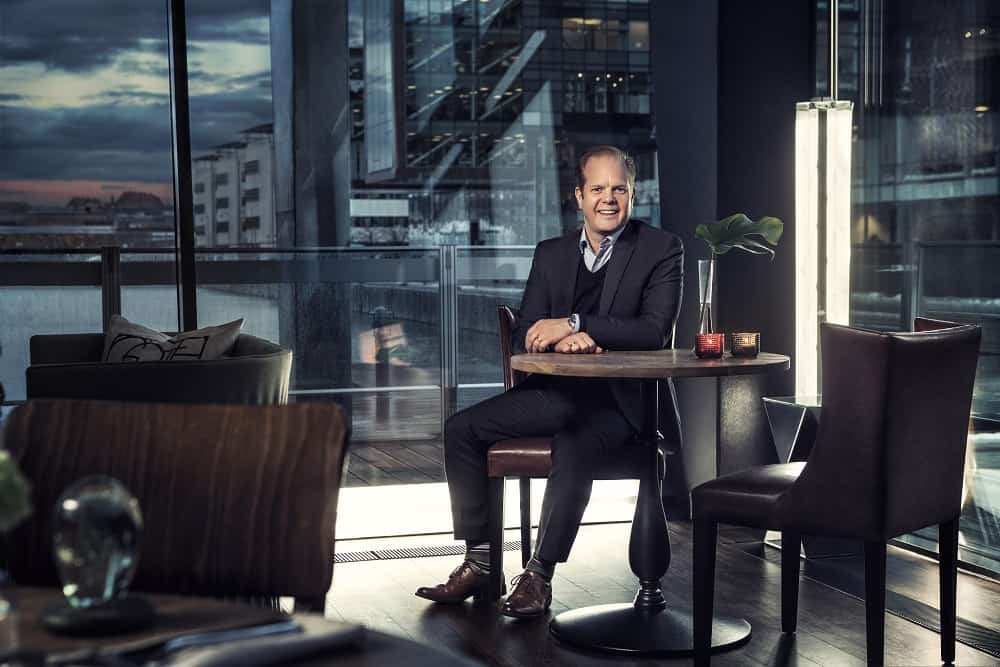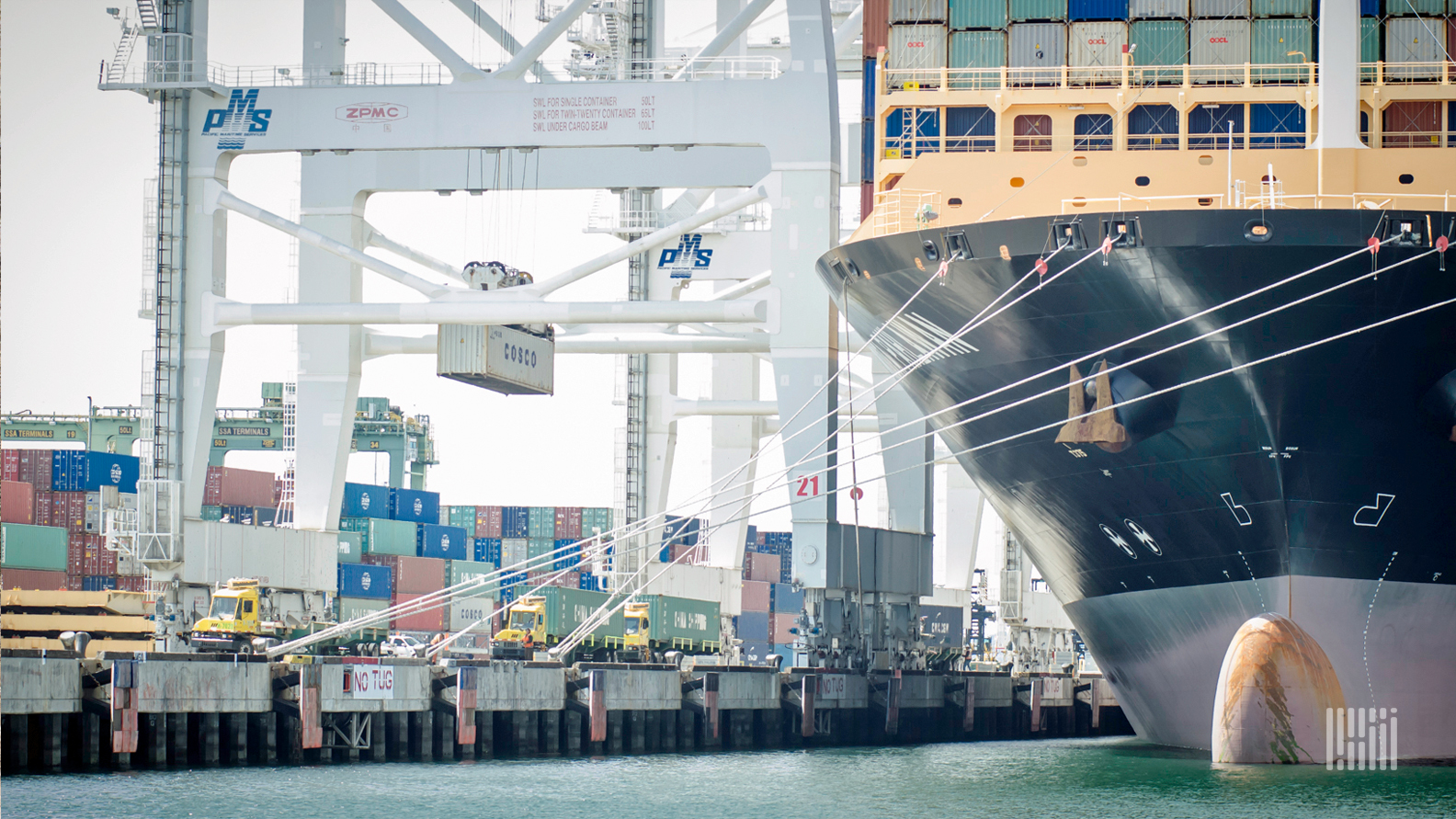The air cargo industry has faced multiple headwinds in 2019. Uppermost has been uncertainty due to trade wars and Brexit, closely followed by – and linked to – global macroeconomic slowdown and strong competition from cheaper shipping options. But one man is optimistic about the ability of the air freight sector to meet the challenges it faces head on.
Meet Steven Polmans, the new chairman of The International Air Cargo Association (TIACA) and director of cargo and logistics at Brussels Airport Company.
Speaking ahead of the forthcoming TIACA Executive Summit and Annual General
Meeting to be held Nov. 19 to 21 at Budapest Airport in
Hungary, Polmans told FreightWaves that during his chairmanship of the
organization, he will encourage airfreight stakeholders to embrace
digitalization to help better weather future storms and challenges.
FW: We’ve seen muted European and U.S. demand for air cargo this year. What have been the main macroeconomic headwinds facing the sector and do you see any sign of a pickup?
Polmans: I think it’s a challenge
to find positive signs. The basic health of the world economy is really hurting
us, although sometimes it’s a self-fulfilling prophecy. We as an industry are
really good at saying things will go down. But I think the biggest risk today
is the uncertainty.
FW: What are the main causes of this uncertainty?
Polmans: For example, the fact
that after all these years we still do not know what is going to happen with
Brexit. The fact that we do not know that if in two weeks from now China and
America could suddenly become big friends or we could be back in the midst of
an economic war. These kinds of things make it so difficult. The volume changes
we see at Brussels Airport, for example, on a weekly basis is the craziest
thing I’ve seen in a long time. You go from plus 10% in one week to minus 10%
the week after. So the unpredictability is really causing a lot of concerns to
everybody.
FW: How is the U.S.-China tariff war playing out in Europe?
Polmans: I think Europe should
and probably is benefiting a bit from this war because China is looking more
toward Europe instead of to the States. The real problem is people become more
reluctant to spend money due to the uncertainty. This creates an economically
more difficult time for everybody and that’s having its effect.
FW: Air cargo freight rates have been bearish for most of 2019. How much of this is the demand factors you mention and how much is down to the supply of bellyhold and freighter capacity?
Polmans: Rates are going down due
to lower demand rather than overcapacity. Nobody does air cargo out of free
will, because we are by far the most expensive mode of transport. People are
not suddenly going to say, “OK, this shipment in the past was fine in three
days, but now it can be done in 18 days.” It’s not that simple. I don’t think
that rates determine demand, it’s more vice versa. People use air cargo only
because they really need to. I don’t think that if rates fall 10% that suddenly
total volume will go up.
FW: We’ve had another Brexit delay until Jan. 31. How debilitating has this whole saga been and what happens next?
Polmans: I think more and more
people are getting convinced that Brexit is going to become reality, no matter
if there is a deal or not. When the deadline approaches in January, I think
that there will again be a buildup of stock and we will see more air cargo
demand because air cargo is a way to avoid possible traffic jams at the ports,
especially if you have food or medicine that needs shipping and is time
precious. But really, no one knows how Brexit will happen or when, there are so
many possible scenarios.
FW: What do you think of Brexit personally?
Polmans: For me the idea of
Brexit is disappointing. My personal opinion is that we are not making the
world a better place by going back to bilateral instead of multilateral
agreements.
FW: Turning away from Brexit, one of the issues we saw in 2018 when air cargo enjoyed very strong demand was a lack of slot capacity, most notably in Europe at Amsterdam Schiphol, but also elsewhere. When cargo is diverted to secondary airports which perhaps don’t have the hub-standard facilities, can this be a concern in terms of service and handling quality?
Polmans: I think that we — cargo
— are a little bit of the stepchild of the family in a sense that for most
airports, passengers come first, cargo second. For most airlines, passengers
come first, cargo comes second. For an awful lot of the forwarders, maritime
comes first and air cargo comes second. So for too many people in our industry,
air cargo is not their core business. For the ones for whom it is the core
business, they have to suffer because they can’t make a difference. By moving
to secondary or all cargo hubs, all stakeholders might get a bit more attention
or more dedicated cargo focus, as some of the airports might take it less for
granted and realize they have to fight for this traffic. And the new business
will at the same time allow them to invest and thus upgrade their facilities, infrastructure
and services.
FW: Does it grate on you when you see the integrators securing the capacity they need?
Polmans: We can complain about not getting slots when the integrators do. And that they charge more for the products than we do for traditional air cargo. But they also deliver a better, more transparent, service. They offer what we, as the traditional air cargo industry, say is not possible. We can only learn from them, as they do make more money, offer a better service, are more punctual. … Just copying their business model is not possible, but looking the other way is also not going to help us.
FW: What lesson should air freight stakeholders learn from the integrators?
Polmans: We all look at our
little fragmented part of the chain, not the full supply chain. And we need to
change. We can finger point and we can blame, but we really have to start
working together on solutions. We are not in an industry that gives us a lot of
time to have a three-year plan. Our strength is our ability to be agile and
flexible.
FW: Can the embrace of digitization help air freight escape this bunker mentality and provide more joined up supply chain solutions that are transparent?
Polmans: Yes, absolutely,
absolutely!
FW: How can this be achieved?
Polmans: This needs action on two
levels: I really think that working together on a digital level is really
important, but it has to be embraced also by working together on a physical
level. It has to be both or it won’t work. It’s like having a car and having
gasoline, you need to have both together to move forward. If you have a car
with no gasoline, you stand still. So yes, we need digital and a physical
collaboration to really start moving forward. If your truck is standing still
in line because of congestion and you see it on a screen, what’s the use? If
you see it digitally but your truck is still blocked, you still have no
solution. You need a physical solution and collaboration supported by a digital
tool. You have to communicate and cooperate.
FW: And how will TIACA work on that during your tenure as chairman?
Polmans: I think the only organization today that covers the whole cargo industry is still TIACA. We need to and we are transforming our organization so it better meets the needs and requirements of our members as well as the industry. In the past we were much more about working together on advocacy and networking, but today we really try to have content-driven programs to facilitate supply chain collaboration.
FW: How will your forthcoming summit in Budapest tackle these areas that need action?
Polmans: As TIACA always did, by
bringing together decision-makers from across the globe for constructive
reflection, sharing and discussions, through panel discussions, keynote
speeches, tracks and general networking.
FW: Will TIACA also be addressing the environmental challenges facing air freight?
Polmans: For sure. Air cargo is
going to be attacked on the environmental level, and that’s something we have
to be prepared for, which is why we are launching a sustainability program. I
think we would be very blind to think that if we keep silent it will go away
and nobody will notice it. We need to make sure that in 30 years from now air
cargo is still there but also that the actions we take are not counterproductive
for the next generation. We need to think how to be more efficient. How can we
be more environmentally friendly? How can we embrace collaboration? How can we
use innovation to become better?
FW: Can you think of anything — a particular policy perhaps — that air freight, or the airline industry, could adopt quite quickly that delivers in the short-term on sustainability or helps reduce air freight’s environmental footprint?
Polmans: An aircraft uses fuel
and makes noise. That’s not something we can avoid that easily. But if we look
at the air cargo industry, it’s not just the aircraft, it’s the trucks and the
rest of the logistics at either end. If we can reduce the overall footprint by
being more efficient, that’s a start. I think it’s very easy to always look at
the aircraft part of the story. However, the progress by Boeing and Airbus on
engines and airplanes has been amazing. If you look at a cargo apron nowadays
in Europe and you compare it to 30 years ago and the old converted aircraft we
had at that time, it is day and night different. The noise is hugely down also.
We have made a lot of progress, although very often it is not perceived like
that. So we need to improve on the environment, but we also need to communicate
our successes better.
FW: And finally, Steven, what gives you cause for optimism for air cargo looking forward?
Polmans: I am optimistic anyway and I am a strong believer that people not willing to change will disappear. When you talked about digitization five years ago versus today, there is now big progress. IATA, for example, is doing really good on air cargo, but it can’t change everything for us as an industry, we have to take our own responsibility too and work together with everybody where possible.
More articles by Mike


